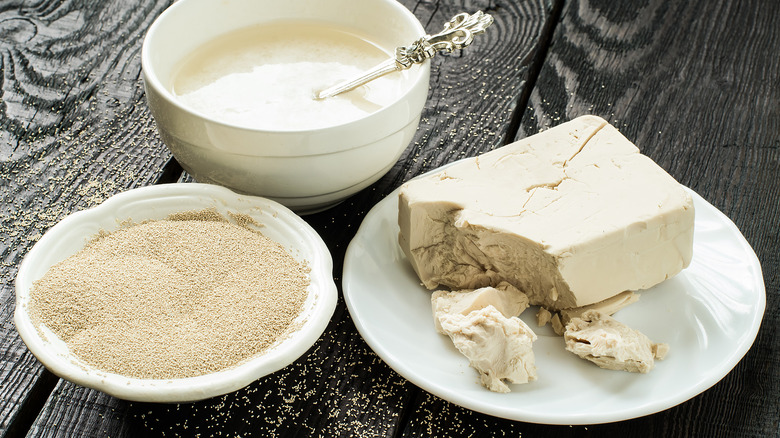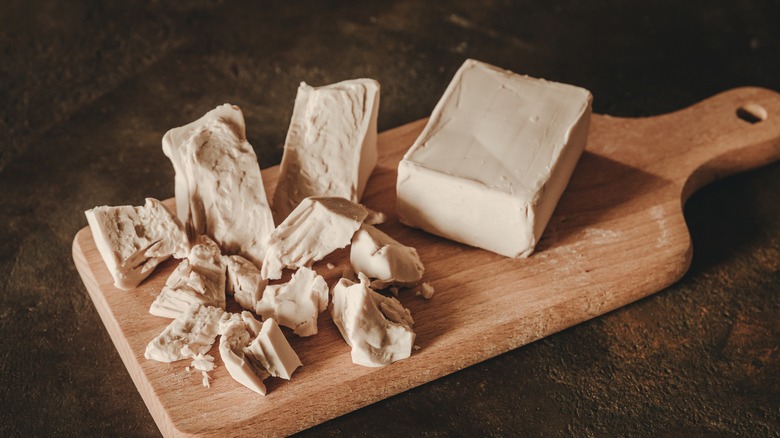How To Store A Block Of Yeast, Both Active Dry And Instant
It may not show many signs of activity, but bakers should never forget that yeast is alive, and you need to store it properly to maintain its potency. When it comes to storage methods, the difference between active dry and instant yeast is negligible, as they both benefit from the same practices. Both also come in either powdered form or vacuum-sealed blocks — and since the latter are bigger bulk purchases, knowing how to store them is vital to get your money's worth.
Keep in mind that air, heat, and moisture are the biggest enemies of yeast blocks, so storage revolves around using an airtight vessel and keeping them in a low temperature environment. Left unopened, active dry and instant yeast blocks stay shelf stable for up to two years, but once opened, the bricks break apart into fine powder and are best transferred into resealable bags or containers.
In the fridge, both dry and instant yeast last up to four months before they start dying off. But if you want to extend that lifespan to at least six months, store yeast in the freezer. To prevent thawing and refreezing unused yeast over and over, you can measure out small portions into individual zip-top bags, put those into a bigger resealable bag, and stick that in the coldest part of your freezer. That way, you only need to take out one bag at a time to thaw. Meanwhile, fresh yeast is another animal entirely. It's far less shelf-stable and requires more delicate handling.
Storage tips for fresh yeast blocks
It may require more work, but fresh yeast has unique advantages. Like the instant kind, it makes bread rise much faster than active dry; unlike either dried form, it gives baked goods a rich, sweet flavor that's hard to mimic with extra sugar. Proper storage of the fresh stuff ensures you'll be ready to make any essential type of bread starter in your own kitchen.
Fresh yeast comes in compressed blocks, similar in appearance and texture to crumbly cheese. You should never store it in a pantry, as it needs to be kept below 45 degrees Fahrenheit to remain stable. It's best to keep its exposure to air and warmer temperatures to a minimum, so divide it into smaller portions after you open the package. Wrap these portions in a tight layer of plastic wrap, then metal foil, then plastic wrap again. You can put them in one big resealable bag and press out the air before storing.
In the fridge, fresh yeast remains potent for up to two weeks. If you freeze the yeast, you risk damaging it because it's so much more delicate than dried versions, but you can do it using the same storage technique as the refrigerator method. Place the yeast in the coldest part of your freezer to hopefully keep it good for up to three months. To thaw any type of frozen yeast, just place a portion in the fridge overnight. And remember, you should not expose opened yeast to room temperature until you're ready to use it.


